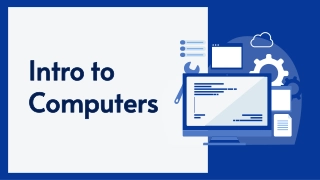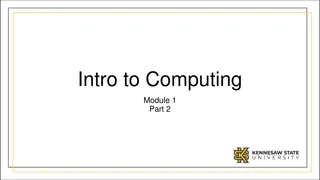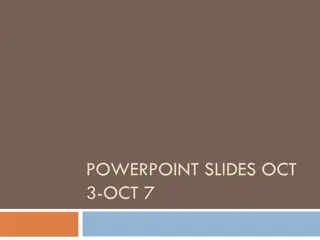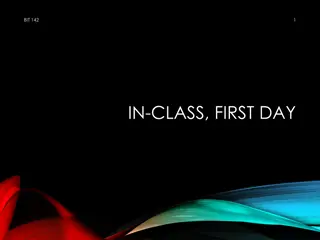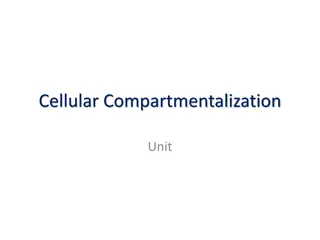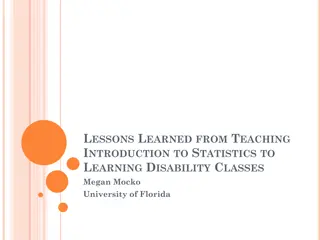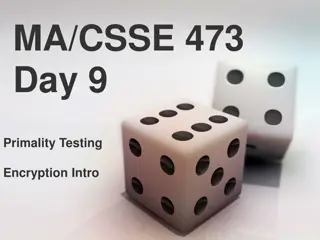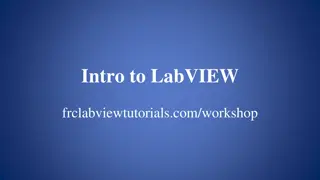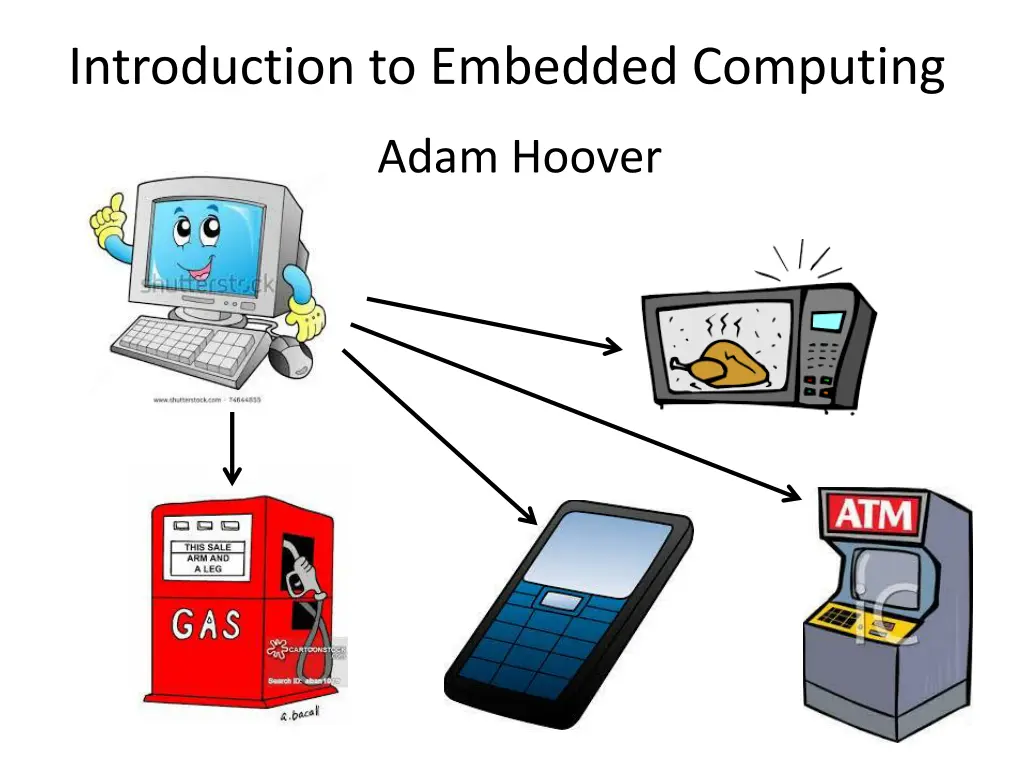
Embedded Computing Fundamentals and Design Axes
Explore the basics of embedded computing, different types of data axes, and computing design variances related to size, cost, processing power, and more. Learn about data types, including Boolean, unsigned magnitude, signed magnitude, and two's complement representation.
Download Presentation

Please find below an Image/Link to download the presentation.
The content on the website is provided AS IS for your information and personal use only. It may not be sold, licensed, or shared on other websites without obtaining consent from the author. If you encounter any issues during the download, it is possible that the publisher has removed the file from their server.
You are allowed to download the files provided on this website for personal or commercial use, subject to the condition that they are used lawfully. All files are the property of their respective owners.
The content on the website is provided AS IS for your information and personal use only. It may not be sold, licensed, or shared on other websites without obtaining consent from the author.
E N D
Presentation Transcript
Introduction to Embedded Computing Adam Hoover
Computing Fundamentals All these devices include: Processor(s) Memory Bus Input/output (I/O) All computations use: Binary data (1 s and 0 s) Fetch/Decode/Execute Instruction Set Architecture (ISA) How do they differ?
Design Axes Suppose you have a travel problem Transportation modes differ in: Size Cost Fuel Origination/Destination
Distance as the design axis mode Distance to be travelled
Computing Design Axes Differences could include: Size Cost Processing power Processor clock speed Computations/second Memory bandwidth # processing elements (cores) Display power Frame rate Triangles/second Screen size These are classic axes for desktops, laptops, etc.
Data Type Axis Data type Example product Boolean Elevator Numeric Clock, pedometer Text Airport departures, highway message boards Transaction ATM (banking), cash register Sound Smoke alarm, surround sound Image/video Video player, smartphone
Data Type Axis Data type Example product Input Output Computing components Boolean Elevator Push buttons On/off lights Segmented display Numeric Clock, pedometer Switches, dials Text Airport departures, highway message boards Dot matrix display Keyboard ? Transaction ATM (banking), cash register Text display (font) Keypad Sound Smoke alarm, answering machine Speakers Microphone Graphics display (pixels) Image/video Video player, smartphone Camera
Data Types What is 10011? Boolean: 0 => false 1 => true TFFTT Unsigned magnitude: each bit => 2n 1+2+16=19 Signed magnitude: 1st bit => sign remaining bits => 2n -3 Two s complement: positive integers => unsigned mag negative integers => reverse bits, add 1 01100+00001 = 01101 -(1+4+8) = -13
Data Types Why use two s complement? Makes addition/subtraction easy. Positive/negative numbers handled the same. Example: 5 + (-2) = 3 5 => 00101 +2 => 00010 -2 => 11101 + 00001 => 11110 5 + (-2) => 00101 + 11110 --------- 1 00011 (throw away carry bit) = 3 circuit in chip Computing chips customized to work with different data types
Data Types What is 10011? Fixed point: n spans - to + in 2n decimal point fixed example: 22 21 20 2-1 2-2 4.75 Signed fixed point: as above, 1st bit => sign -0.75 Floating point: sign bit s bits for significand e bits for exponent formula varies but basic idea is number = (sign) 1.s 2e -1.00 23 = -8.0
Data Types What is 10011? ASCII: 7-bit patterns of alphanumeric and control signals examples: 0100 0001 => 65 => A 0101 1101 => 93 => a 0000 1001 => 9 => horizontal tab 5/8 of a character? UNICODE: 32-bit patterns (all language symbols) example: 0000 0011 1100 0000 => 03C0 (hex) => 5/32 of a character?
Data Types Sound: air pressure measured over time
Data Types Digitizing sound Design choices include: Sampling rate 44 KHz common Bit depth 8, 16, 24, 32 Encoding: Pulse code modulation (PCM) differential PCM #channels 1 => mono 2 => stereo 6 or 7 => surround Bit depth Sampling rate
Data Types Image: visible light measured over space similar phenomenon to sound, but (a) much faster! 390-700 nm waves => 430-790 teraHz computing circuits cannot sample this fast instead, accumulate total power during open shutter (b) many more channels! 480x640, 1024x768, etc. digitize each channel separately into pixel Design choices include: Wavelength frequencies (RGB, greyscale, IR) Raster size Sampling rate (for video) Pixel encoding (lots of choices)
Data Type Axis Data type Example product Input Output Computing components Boolean Elevator Push buttons On/off lights Numeric Clock, pedometer 0-9 keypad Segmented display Different types of processors, memories, buses, data compression, operating systems, and I/O interfacing Text Airport departures, highway message boards Keyboard Dot matrix display Transaction ATM (banking), cash register Keypad Text display (font) Sound Smoke alarm, answering machine Microphone Speakers Image/video Video player, smartphone Camera Graphics display (pixels)


